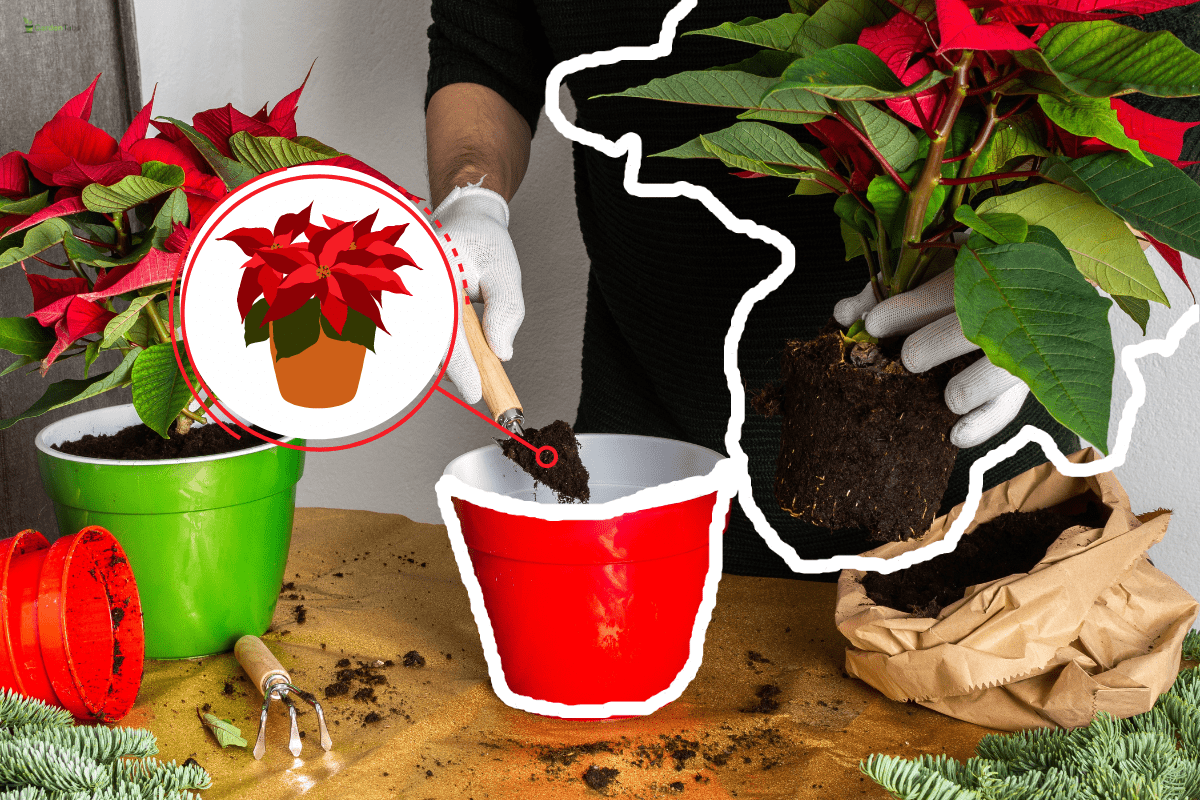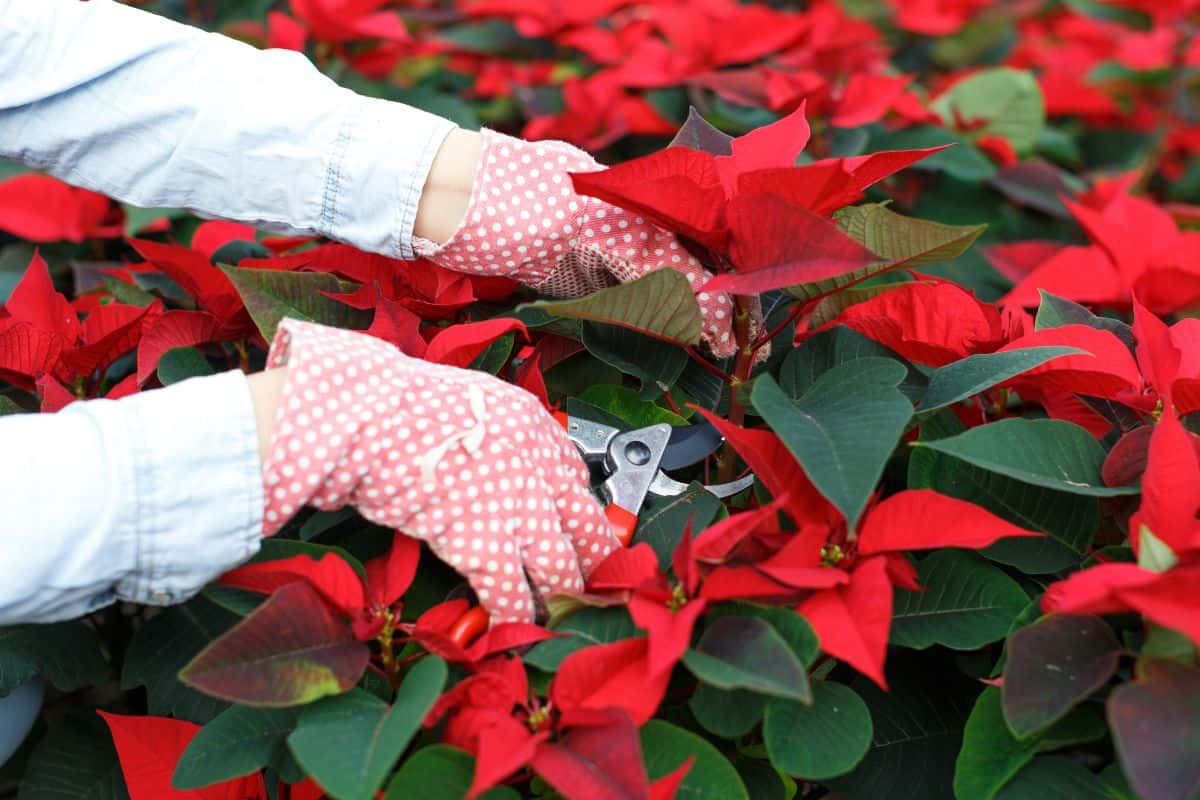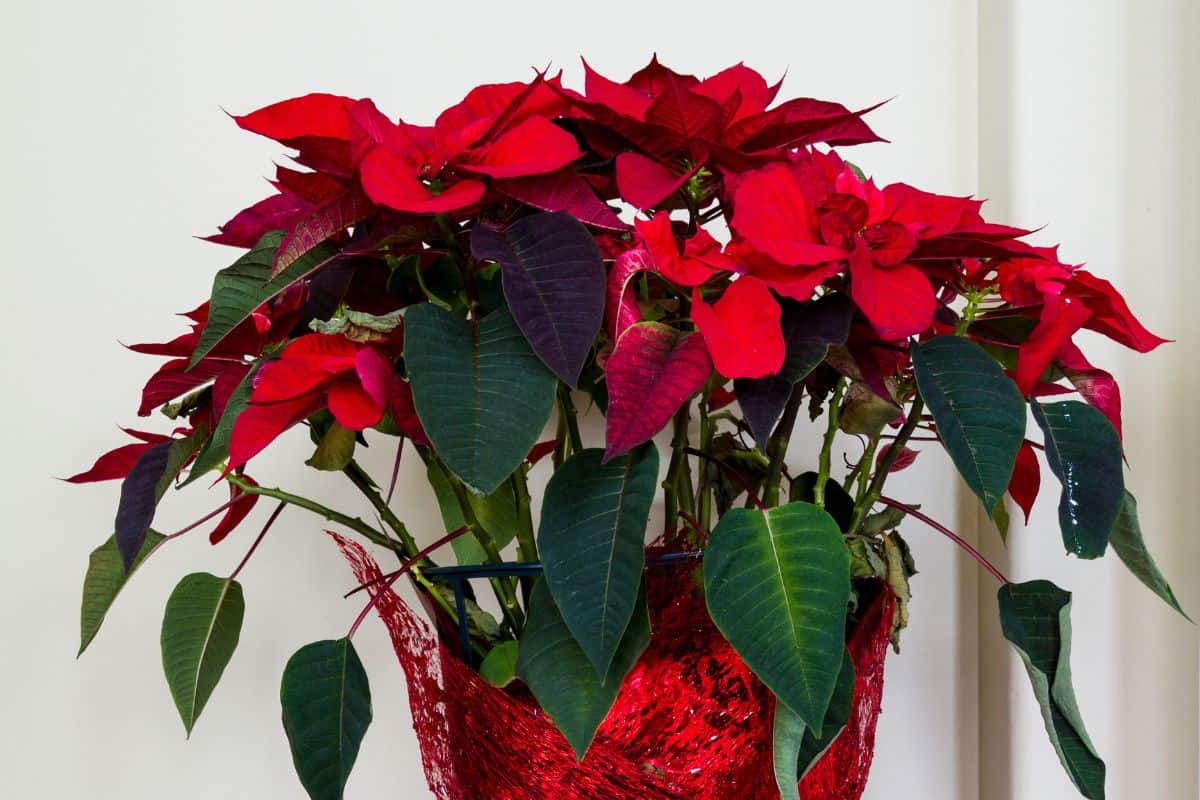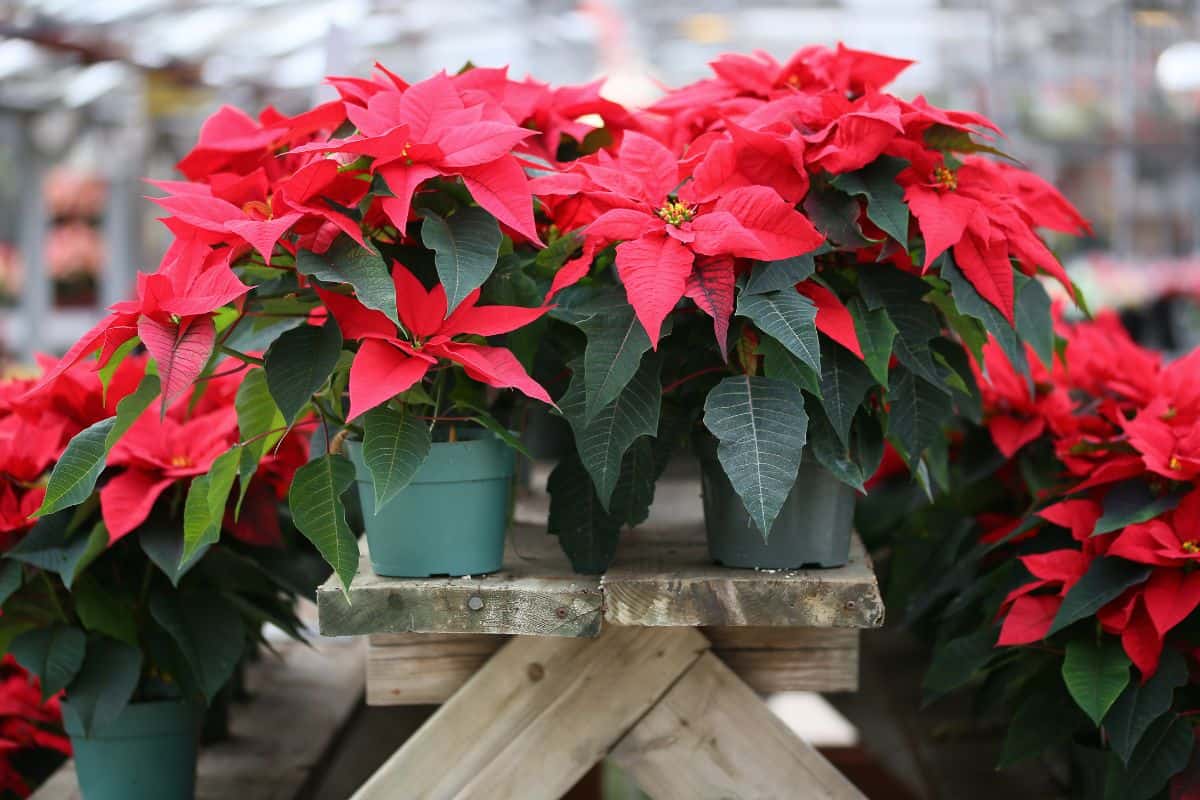Poinsettias add beauty and mood to winter holidays and are used as a Christmas display. Its vibrant red and green foliage gives a cheerful atmosphere. Keeping your poinsettia after the holiday season and saving for next year could be tricky.
So, how do you keep it for the next holiday? Do you need to transplant it? We have the answers!
Repotting poinsettia is necessary to revive or regrow it for the next blooming season. Poinsettia is a perennial that can grow back after repotting and pruning during spring and when you try to save it from dying. It is also an annual ornamental plant if placed outdoors for winter holiday display.
Would you like to learn more about how to care for a poinsettia? What are the things to consider to keep the plant longer? We searched the web for the answers, so continue reading this post for more details.

Do You Need To Transplant Poinsettia?

Generally, it's best to transplant poinsettia between April and May and place it outdoors in a sunny spot. Remember that poinsettia has brittle roots, so be careful in repotting this plant.
Water the plant roots for a couple of days before repotting for easy handling.
How To Transplant Poinsettia
Poinsettia requires repotting yearly to save it, regardless of the condition of the pot. We recommend using fresh soil with coco peat substrate.
You want to transplant poinsettia every spring once the blooms appear. The next transplanting is when you are trying to save the plant.
Things to do when repotting include:
- Prune the dead, rotten, and dry roots.
- Carefully rinse the old soil.
- Get a pot and fill it with a new substrate.
- Place the plant and press the substrate firmly.
- Water the plant and keep it moist. Avoid excessive moisture.
- Apply fertilizer after the first few weeks of repotting since the substrate still has enough
- nutrients for the plant.
- Keep poinsettia in a covered area like the terrace or balcony during the first few weeks of transplanting to develop colored bracts.
How Do You Take Care Of Poinsettias?

Poinsettia is a seasonal plant, hence if you wish to keep poinsettia and regrow over winter, here are the things to consider in taking care of poinsettia:
Pruning
Around April, Prune poinsettia is 4 to 6 inches from the base to prepare the plant to survive winter and spring and bring back the blooms next year.
Place the plant in a place where there are 65 degrees Fahrenheit temperature.
Repotting
Repot the plant in May and place it in a cool but bright spot between 59 to 65 degrees Fahrenheit. Place the plant in a partial shade location once the nights become warmer.
Fertilizing
Once new growth appears, start feeding with indoor fertilizer. However, feeding the plant during the blooming season is not advisable. It is ideal to use fertilizer after the holiday season.
You may apply indoor fertilizer once every two weeks or once a month.
Storing
Poinsettia needs shaded places for 12 hours or more in November to keep the flowers last for more than a month. This plant doesn't do well in full shade.
Place it again near a closed window for sunlight the next day. Avoid placing the plant from open windows or any area with forced air or fan blowing. Do not place the plant near the heat ventilator, radiators, or heater.
Watering
Poinsettia is a tropical plant that doesn't like too much water, so less water is better. Use room temperature water to avoid shocking the plant. Water poinsettia once the soil surface feels dry to the touch.
Soak the soil but let it drain before putting it back in its spot. Avoid waterlogging to prevent to avoid dropping leaves and root stress. The worst thing that could happen is the plant will die due to too overwatering.
Precaution
Keep the plant away from pets because this plant produces low-toxicity chemicals that cause drooling, vomiting, diarrhea, and allergies. Call the vet if your pet swallows poinsettia. These can be toxic to animals, so this is serious.
Drainage
The Poinsettia container should have enough holes for drainage. When repotting, the container must be at least 2 inches bigger in diameter than the old one.
If you recycle an old container, disinfect it using bleach before repotting the poinsettia because it may have pathogens from the previous plant.
Why Is My Poinsettia Dying?

Poinsettia is prone to several diseases caused by fungal, bacterial, or parasitic infections. Some of the diseases are as follows:
Pythium Root Rot
Pythium root rot is caused by excessive fertilizer, high moisture, and high pH levels. You will see brown discoloration on the roots and callus tissues. Infected cuttings wilt and quickly die.
Avoid over-fertilizing and use the organic one if necessary. Fertilize once or twice a month, or follow the direction on the label. Also, pick soil that has a pH level of 5.5 to 7.0 pH scale.
Click here to see this potting mix on Amazon.
Steps to save poinsettia:
- Pull the plant from the soil.
- Wash the roots with running water and let the plant dry.
- Cut the infected roots.
- Apply organic fungicide before repotting.
- Use a new well-drained container and a new potting mix soil. We recommend a mixture of perlite, peat moss, and all-purpose soil.
- Water the plant and drain well before setting it aside.
Rhizoctonia Root And Stem Rot
Rhizoctonia root and stem rot signs are the root tips are decaying and brown, showing cankers at the stem, and the plant wilts. This disease commonly appears from early to mid-summer.
Cankers restrict water and nutrient movements, which causes the plant to wilt and die.
How to control Rhizoctonia root and stem rot:
View this copper fungicide on Amazon.
- If the plant is already dead, use hand gloves and remove it. Dispose of the diseased plant properly.
- Avoid reusing the soil since Rhizoctonia is a soil-born disease.
- Do not reuse the containers to avoid spreading and infecting new plants.
- Water a new plant or replanted poinsettia in the morning and dry the soil the rest of the day.
- Avoid placing plants in a cramped area. They need spaces for airflow and humidity.
Black Root Rot
Black root rot on poinsettia is caused by the fungus Thielavioposis basicola. This fungal disease damage plants, herbaceous perennials, and other woody plants, including poinsettia.
It can spread on plants without showing signs or symptoms of root rot for years. The symptoms above the ground seem like starvation, but you need a thorough diagnostic to detect black root rot.
One of the reasons for black root rot is the soil's pH level. Thielaviopsis thrives at 6.2 pH level and above. Reduce the soil pH to control this fungal disease.
Always sanitize containers and pots to prevent this disease from coming back. Use a fungicide with thiophanate-methyl to control black root rot.
Click here to check thiophanate-methyl fungicide on Amazon.
Botrytis Blight
Botrytis blight, also known as gray mold, is caused by botrytis cinerea that can infect a wide range of greenhouse crops. This fungal disease affects the injured parts of the plant's tissue.
Furthermore, botrytis can thrive in both humid and cool temperatures.
To control botrytis, remove dead plants and weeds from the surroundings, and avoid damaging healthy plants. Allow good airflow between plants and apply fungicides to prevent botrytis.
Click here to check Grower's Ally on Amazon.
Scab
Scab, also known as spot anthracnose, is a fungal infection caused by the fungus Sphaceloma poinsettia. The signs show oblong or singular, light tan to white lesions on leaves and stems.
Isolate the infected plants to avoid spreading. Apply fungicides to control this fungal infection. Avoid using tools you used on infected plants on healthy plants, or disinfect them before using them.
View this Bonide Fungicide on Amazon.
Powdery Mildew
Powdery mildew is caused by Oidium sp, a fungal disease that appears white, fluffy, or powder-like. Your poinsettia leaves turn yellow and make your plant looks dull. These fungi spread through the air and transfer to other plants for new infections.
Powdery mildew is active when the environment is in favorable conditions. This fungus can germinate even at humidity levels.
Spraying fungicides is the best solution to control powdery mildew.
See this Garden Safe Fungicide on Amazon.
To Wrap It All Up

In this article, we discussed the importance of repotting poinsettia. We also learned how to care for and prolong the plant's life. We hope that we answered all your questions through this post.
Made it to the end? Check out these helpful related posts!






